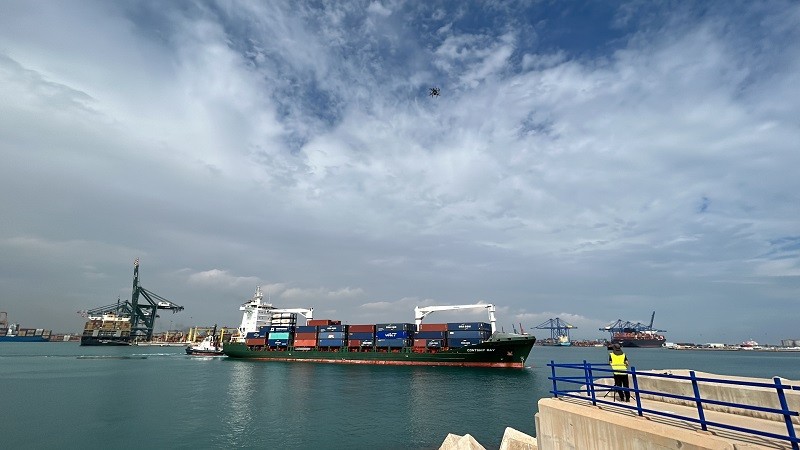PASSport project testing

Ports are heavily trafficked areas with many entry points operating nonstop, which exposes them to vulnerabilities that may cause failures or disruptions in their daily operations, thus degrading their services and infrastructure.
The goal of the project known as PASSport (operational platform managing a fleet of semi-autonomous drones that use GNSS high accuracy and authentication to improve security and safety in port areas), launched by the EU Agency for the Space Programme (EUSPA), is to engineer and qualify a solution that extends situational awareness of the surrounding environment in order to improve security and safety at port areas.
One of the most cutting-edge aspects of PASSport is the use of a fleet of semi-automated aerial and underwater drones that integrate features from Galileo and other sensors to increase the reliability of port surveillance, allowing the drones’ imagery to detect and locate potential targets, and enabling a safe and efficient guidance, navigation, and control (GNC) in challenging environments with obstacles and potentially adverse weather conditions.
GMV is participating in various elements of PASSport. First, it’s providing GNSS receivers that integrate Galileo’s OSNMA (Open Service Navigation Message Authentication) service, integrity with IBPL (Isotropy-Based Protection Levels), and PPP (Precise Point Positioning). The receivers are based on an evolution of the MagicUT (wizaRX) user terminal, and they are integrated into the aerial drones to improve their positioning accuracy and integrity, while also implementing authentication capabilities. GMV is also using the SRX-10i/DINTEL interference monitoring system to guarantee the robustness and protection of the GNSS signal against possible interference. Finally, GMV is providing Shiplocus®, its multi-application commercial platform for port management and maritime traffic operations.
Following the tests in Hamburg last June, preparations began for the final round of testing, which took place in Valencia from the 17th to the 19th of October. These preparations consisted in carrying out GNSS receiver integration tests on the various drones involved in the project, specifically on the Eurecat and Topview platforms. For this purpose, flight tests were carried out in Valencia and Naples, respectively, and were successful in both cases. At the same time, work was carried out on the SRX-10i/DINTEL and Shiplocus integrations with the PASSport platform, to facilitate the exchange of GNSS interference and AIS ship data, respectively.
The official campaign, which took place two weeks ago at the port of Valencia and was organized by the Valenciaport Foundation, was hampered by rain and wind, but it allowed PASSport to demonstrate its application as a platform, and GMV to demonstrate the technology developed and used in the framework of the project:
A version of Shiplocus with the ability to monitor the positions of the drones that participated in the testing was deployed in Valencia, providing, in parallel, the flow of AIS data relevant for the exercise’s area of interest.
For this campaign, a SRX-10i/DINTEL unit was deployed in Valencia’s port environment. Due to the legal restrictions on radiation in the GNSS spectrum, a conducted interference detection test was carried out. The purpose of the test was to simulate a typical attack on GNSS systems, known as a jamming attack, which attempts to disrupt a GNSS receiver's processing tasks. In the case of SRX-10i/DINTEL, the attack was detected immediately and successfully, informing the operator of the PASSport platform in real time so that they could take the appropriate mitigation decisions.
The magicUT and wizaRX GNSS receivers were successfully integrated in the project’s drones, and their security (OSNMA) and safety (IBPL) features, as well as their precision (PPP), were demonstrated effectively.